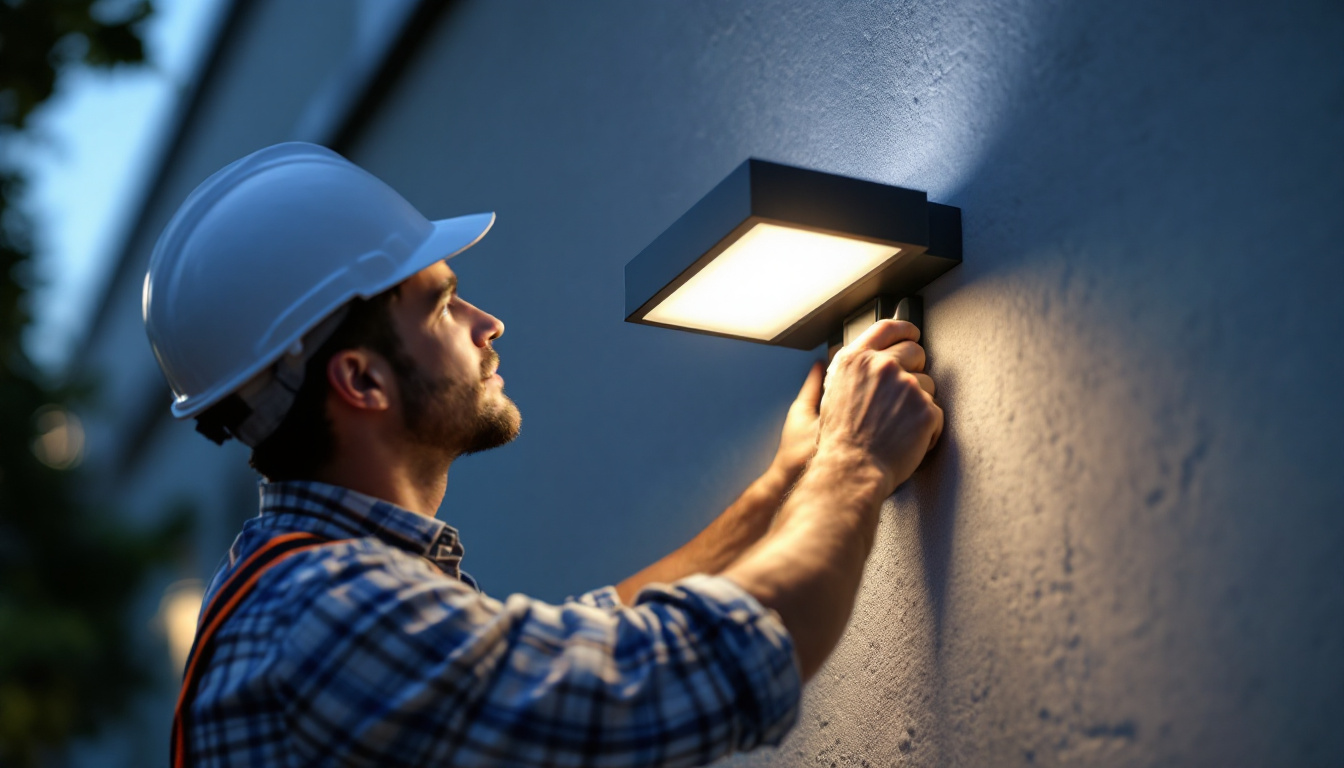
For lighting contractors, understanding electrical outlet power compliance is crucial for ensuring safety and efficiency in installations. Compliance involves adhering to various regulatory standards and codes that govern electrical systems. These standards not only safeguard the end-users but also protect contractors from potential liabilities.
The National Electrical Code (NEC) serves as the foundation for electrical safety in the United States. It outlines the minimum requirements for safe electrical installations, including those related to outlet power. Familiarity with these codes is essential for any contractor aiming to provide high-quality services while minimizing risks.
Compliance with electrical codes is not merely a legal obligation; it is a commitment to safety and quality. Non-compliance can lead to severe consequences, including electrical fires, equipment damage, and even personal injury. For lighting contractors, adhering to these standards enhances their reputation and builds trust with clients.
Moreover, staying compliant can lead to cost savings in the long run. Proper installations reduce the likelihood of costly repairs and rework, which can arise from non-compliance issues. Therefore, understanding the nuances of electrical outlet power compliance is not just beneficial; it is imperative for successful contracting.
In addition to financial implications, compliance also fosters a culture of safety within the workplace. When contractors prioritize adherence to electrical codes, they not only protect themselves but also create a safer environment for their teams and clients. This proactive approach can lead to fewer accidents and a more efficient workflow, ultimately resulting in higher job satisfaction and better project outcomes.
Several key regulations govern electrical outlet power that every lighting contractor should be aware of. These include the NEC, local building codes, and any specific regulations that may pertain to commercial versus residential installations. Each of these regulations has unique requirements that can affect how outlets are installed and utilized.
Additionally, understanding the differences between general-purpose outlets and those designed for specific applications—such as GFCI (Ground Fault Circuit Interrupter) and AFCI (Arc Fault Circuit Interrupter) outlets—can significantly impact compliance. Each type serves a specific purpose and must be installed according to its designated code to ensure safety and functionality.
Furthermore, the rise of smart home technology has introduced new considerations for electrical outlet compliance. As more homeowners and businesses invest in smart devices, contractors must be aware of the additional power requirements and safety standards associated with these products. This includes ensuring that outlets can handle the load of multiple devices and that they are installed in locations that maximize accessibility and usability. By staying informed about these evolving standards, contractors can offer comprehensive solutions that meet the needs of modern clients while maintaining compliance with all relevant regulations.
Lighting contractors must be familiar with various types of electrical outlets to ensure compliance and functionality in their installations. Each outlet type has its own specifications and applications, making it essential for contractors to choose the right one for each project.
Standard 120-volt outlets are the most common type found in residential and commercial settings. They are designed to accommodate a wide range of devices, from lamps to small appliances. When installing these outlets, contractors must ensure that they are properly grounded and meet the required spacing and height regulations.
In addition to standard outlets, it is important to consider the load capacity. Overloading an outlet can lead to overheating and potential fire hazards. Therefore, understanding the electrical load requirements of the devices that will be used is essential for safe installation. Furthermore, contractors should be aware of the National Electrical Code (NEC) guidelines, which provide detailed instructions on the maximum number of outlets allowed on a single circuit, ensuring that installations are both safe and efficient.
Specialty outlets, such as GFCI and AFCI outlets, are designed for specific safety applications. GFCI outlets are commonly used in areas where water is present, such as kitchens and bathrooms, to prevent electrical shock. On the other hand, AFCI outlets are designed to detect and prevent arc faults, which can lead to electrical fires.
When installing these outlets, contractors must follow specific guidelines to ensure they function correctly. For instance, GFCI outlets must be installed in locations where moisture is a concern, while AFCI outlets are typically required in living areas. Understanding the requirements for each type of outlet is critical for maintaining compliance. Additionally, it is worth noting that the installation of these specialty outlets not only enhances safety but can also be a selling point for homeowners looking to improve the electrical safety of their properties. As technology advances, new outlet types, such as USB-integrated outlets, are also becoming popular, offering convenience for charging devices without the need for additional adapters.
proper installation practices are essential for ensuring that electrical outlets function safely and efficiently. Lighting contractors should adhere to best practices to minimize the risk of future issues and maintain compliance with electrical codes.
Before installation, careful planning of the outlet layout is crucial. This involves determining the optimal locations for outlets based on the intended use of the space. For example, in a residential setting, outlets should be placed near seating areas, workspaces, and other locations where electrical devices will be used.
Additionally, contractors should consider the number of outlets needed to prevent overloading. The NEC provides guidelines on the minimum number of outlets required in various settings, which should be taken into account during the planning phase. It is also beneficial to think about future needs; incorporating additional outlets in high-use areas can save time and money in the long run, as retrofitting can often be more costly and disruptive.
Moreover, it is wise to consider the types of devices that will be plugged into these outlets. For instance, areas designated for kitchen appliances may require outlets with GFCI (Ground Fault Circuit Interrupter) protection to prevent electrical shock, while outdoor outlets should be weatherproof to withstand the elements. By anticipating these needs, contractors can create a more functional and safe electrical system.
Proper wiring is fundamental to the safe operation of electrical outlets. Contractors must ensure that they use the correct gauge wire for the circuit and that all connections are secure. Loose connections can lead to arcing and overheating, posing serious safety risks.
Furthermore, it is essential to follow color-coding conventions for wiring to avoid confusion during installation. This includes understanding which wires are hot, neutral, and ground, as well as ensuring that all connections are made according to code requirements. In addition to these practices, utilizing high-quality materials and components can significantly enhance the durability and reliability of the installation. For example, using insulated connectors and heat-shrink tubing can provide extra protection against moisture and corrosion, which is particularly important in areas prone to humidity.
Another critical aspect of wiring is the importance of circuit breakers. Each outlet should be connected to a circuit that is adequately protected by a breaker of the appropriate rating. This not only safeguards the wiring from overloads but also ensures that in the event of a fault, the circuit will trip, preventing potential hazards. Regular testing of these breakers and the overall system can help identify any issues before they escalate, ensuring continued safety and performance.
After installation, thorough testing and inspection are vital to ensure compliance and safety. Lighting contractors should implement a systematic approach to testing outlets and circuits to identify any potential issues before the project is completed.
Testing procedures should include checking for proper voltage, grounding, and functionality of the outlets. Using a multimeter can help verify that outlets are providing the correct voltage and that grounding is intact. Additionally, testing GFCI outlets with their built-in test buttons is essential to ensure they trip correctly in the event of a fault.
Contractors should also check for any signs of overheating or damage during testing. If any issues are identified, they should be addressed immediately to prevent future complications.
Documentation plays a crucial role in the compliance process. Keeping detailed records of installations, inspections, and testing results can provide valuable information for future reference. This documentation can also serve as proof of compliance in case of any disputes or inspections by regulatory bodies.
Furthermore, maintaining accurate records can help contractors identify trends or recurring issues in their work, enabling them to improve their practices over time. This proactive approach not only enhances safety but also contributes to the overall quality of the contractor’s services.
Electrical codes and regulations are subject to change, making it essential for lighting contractors to stay informed about the latest updates. Regularly reviewing changes to the NEC and local building codes can help contractors maintain compliance and ensure the safety of their installations.
Participating in continuing education courses and workshops can be an effective way for contractors to stay updated on industry standards. Many organizations offer training programs that cover the latest regulations, installation techniques, and safety practices.
Additionally, networking with other professionals in the field can provide valuable insights into best practices and emerging trends. Engaging with industry associations can also offer resources and support for staying compliant with evolving regulations.
Technology can play a significant role in helping contractors stay compliant. Various software tools and applications are available that can assist with project management, documentation, and compliance tracking. Utilizing these tools can streamline processes and ensure that all aspects of a project are managed effectively.
Moreover, technology can aid in the design and planning stages of installations. Advanced design software can help contractors visualize outlet placements and electrical layouts, ensuring that they meet compliance requirements before any physical work begins.
Electrical outlet power compliance is a critical aspect of lighting contracting that requires a thorough understanding of regulations, best practices, and ongoing education. By prioritizing compliance, contractors can enhance safety, improve the quality of their work, and build trust with clients.
From understanding the various types of outlets to implementing proper installation techniques and staying updated with regulations, every aspect of compliance contributes to the overall success of a lighting contractor’s business. By investing time and effort into these areas, contractors can ensure that their installations are not only compliant but also safe and efficient for end-users.
As you prioritize electrical outlet power compliance and enhance the safety and quality of your installations, LumenWholesale is here to support you every step of the way. We provide contractors with top-quality, spec-grade lighting products at unbeatable wholesale prices, ensuring your projects shine with reliability and high performance. Say goodbye to inflated markups and hello to hassle-free bulk buying with free shipping. Elevate your lighting contracting business with the perfect blend of quality, affordability, and convenience. Don’t compromise on your lighting needs—choose Wholesale Lighting at the Best Value with LumenWholesale.

Discover innovative solutions for lighting contractors facing challenges with remote-controlled solar-powered flood lights.

Discover essential tips and expert advice on selecting and installing recessed downlights in this comprehensive guide for lighting contractors.

Explore how commercial LED outdoor light fixtures are revolutionizing the industry and boosting profits for lighting contractors.

Discover how Pathway Lighting Products can transform your lighting projects from ordinary to extraordinary.